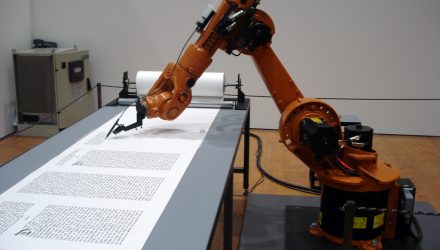But when it comes to measuring temperature inside microelectronic devices, there has always been one big hurdle: including a temperature probe in something so small can throw off conditions enough to render your measurements useless.
Whether it’s with digital-industrial machinery or a collaborative robot, we need to do better if we want to eliminate all the potential risks of heat.
Scientists are now eyeing nanoscale temperature probes as a way to allow our machines to monitor themselves for temperature variations.
These nanoscale probes are nothing like a conventional thermometric probe. Scientists are using the properties of materials used to build robots—like aluminum’s oscillations under an imaging beam—as a way to measure local temperature gradients.
It sounds complicated, and it is. But the mechanics are surprisingly simple, and could have a wide variety of material applications, including letting metals and silicone effectively operate as their own thermometers.
3. “Activity Trackers” for Robots
One reason humankind has found itself so reliant on technology is because our bodies weren’t designed for everything we want to do. For one thing, our eyes can only take in a limited amount of the world around us.
We’re even more limited with regards to seeing what goes on inside our bodies—meaning we’re often in the dark about critical system failures until it’s too late for medical intervention.
Wearable activity trackers are getting better at giving us advanced warning of potentially fatal health conditions, but they still have a long way to go. Meanwhile, roboticists’ attempts to do the same thing—but for robots—have made huge progress.
Researchers are looking at the natural, barely-audible vibration and “hum” all electronics and materials give off while they’re doing “work.”
Even the tiniest change in these vibrations is enough for sufficiently sensitive equipment to tell when something is about to go wrong, as sometimes happens with unsafe amounts of heat and friction.
The idea here is that machines and robots in the near-future will be able to run near-constant checkups in the background to monitor their overall “health,” as well as the condition of individual components.
We rely on robots that work long hours at repetitive tasks, which inevitably causes them to suffer from general wear and tear. Perhaps in the future, we won’t ever need to stop operations to repair them, because they’ll already be doing it themselves!
Related: The Potential of Flexible, Soft Robots
For more trends in robotics and artificial intelligence, visit the Robotics & AI Channel.
